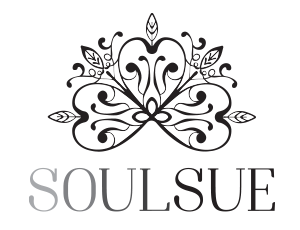Some people think art isn’t as important as other disciplines like science or technology. Others wonder what art can offer the world in terms of cultural evolution and social development. How could art possibly change the world? The truth is, when it comes to the value and purpose of art, there are no logical answers. Artistic knowledge and its importance have been shaped over centuries, through the creation of concepts and philosophical ideas. These concepts haven’t just changed the way we view art, but have inspired people to live and create in different ways.
So, how is art defined literally? The word “art” comes from the Latin ars or artem, meaning “skill,” “work of art,” among other similar definitions. The word itself carries many meanings: it can refer to a skill gained through experience, observation and study, or to a field of knowledge that demands expertise and ability. Art is also defined as the conscious use of imagination and skill in creating something—especially objects with aesthetic value.
Yet, some would argue that art is not only about making beautiful objects (and I agree). If a highly skilled painting is considered art, could a well-made piece of furniture also be called art? Nowadays, some aesthetic services call themselves “artistic work” (eyebrow shaping, nail design, etc.)—but are they really? The definition of art often depends on personal perception. Through the centuries, art was also defined by strict rules, especially in the famous European art academies in Italy, France and England.
At that time, there was an academic component meant to distinguish artists from artisans. There was a constant debate: art for art’s sake, art for aesthetics, and art with function or purpose. These were some of the rules used to define it. But could these rules ever truly capture the deeper meaning of art?
Over time, art broke free from these constraints. It moved beyond the limits of rules, appearing on all sorts of surfaces and objects. Art became more subjective, and artists began to use a wider range of materials and perspectives.
Our techniques and methods evolved, and at the same time, our preconceived ideas about what art is have expanded. Art became commercialised, stripped of classical meaning, and highly stylised. Pop art, expressionism, abstraction, and many other forms of artistic expression emerged. There are countless genres today—and I fit into a few.
Artistic expression allows us to reveal our inner worlds, creating bridges between emotion, thought, and the visible universe.
When I paint with acrylics, watercolours, and other materials, I am within the genre of the visual arts (which includes painting, sculpture and printmaking). When I design, illustrate, or tattoo living canvases, I am part of the applied arts (which covers architecture, design, graphic design, fashion, and any field that gives aesthetic value).
There are also distinct artistic types—such as decorative craftwork, performance art (theatre, music, etc.), and more. As we can see, art’s nature and definition are fluid, always evolving, and open to all.
Its language and message are universal. Art expresses personal and public feelings, social issues, culture, politics, spirituality—or it can simply exist without any obvious purpose. There is enormous freedom in making art, which is precisely why it becomes a direct line of connection to other people.
Art allows people (the artists) to express themselves intimately, and lets viewers be touched by sensations and emotions as they observe. For many, art is a therapeutic tool (for both creator and spectator), supporting mental health, clarity, and emotional calm. It allows the creation of new images and things that add meaning to people’s lives.
Art is the expression of our deepest human nature, a testimony that crosses time and remains timeless.
It is a resource that has been present throughout history, from cave paintings to Renaissance portraits. Art is a window that shows the lifestyle of different civilisations over the centuries, connecting us to our ancestors and our lineage. We learn from past challenges, and are inspired by them to create the new.
Visual expression through art supports human development—learning, understanding concepts, problem solving, motor skills, critical thinking, creativity, and the ability to see from new perspectives.
In school, among students, the often underrated art class is the most anticipated, because of its unstructured format—so different from all other subjects. Freedom, creativity and expression beyond rules… that’s what art lessons offer to students who spend their days in a rigid academic structure.
Artistic expression matters: Art adds beauty to life, making spaces visually more attractive, disruptive and interesting.
Whether for political, social, cultural reasons or for no reason at all, art is always present in human life. Its constant presence in our culture—in countless forms—tells the story of humanity. Its fluidity and versatility make it a powerful tool with endless applications. Art gives us the power to shape and narrate our lives and experiences. It allows us to respond with creative expression to world events, enhances our wellbeing, deepens our spiritual and metaphysical sense, helps us celebrate change or rebel against it. Art gives us another kind of voice.
FAQ
Q: Why is art important in society?
A: Art inspires creativity, connects people, expresses culture, and contributes to emotional wellbeing.
Q: How has the definition of art changed over time?
A: Art has evolved from strict academic rules to a more fluid, subjective, and diverse form of expression.
Q: Can anyone be an artist?
A: Yes. Artistic expression is accessible to everyone, regardless of training or background.
Q: How does art affect our wellbeing?
A: Art fosters emotional clarity, creativity, relaxation, and can be therapeutic for both creators and viewers.
Q: Is art only about beauty?
A: No. Art can challenge, provoke, tell stories, and convey political, cultural, or personal messages.
What’s the craic? More soul, more stories, right this way:


